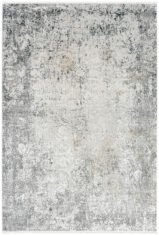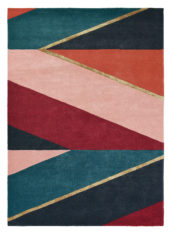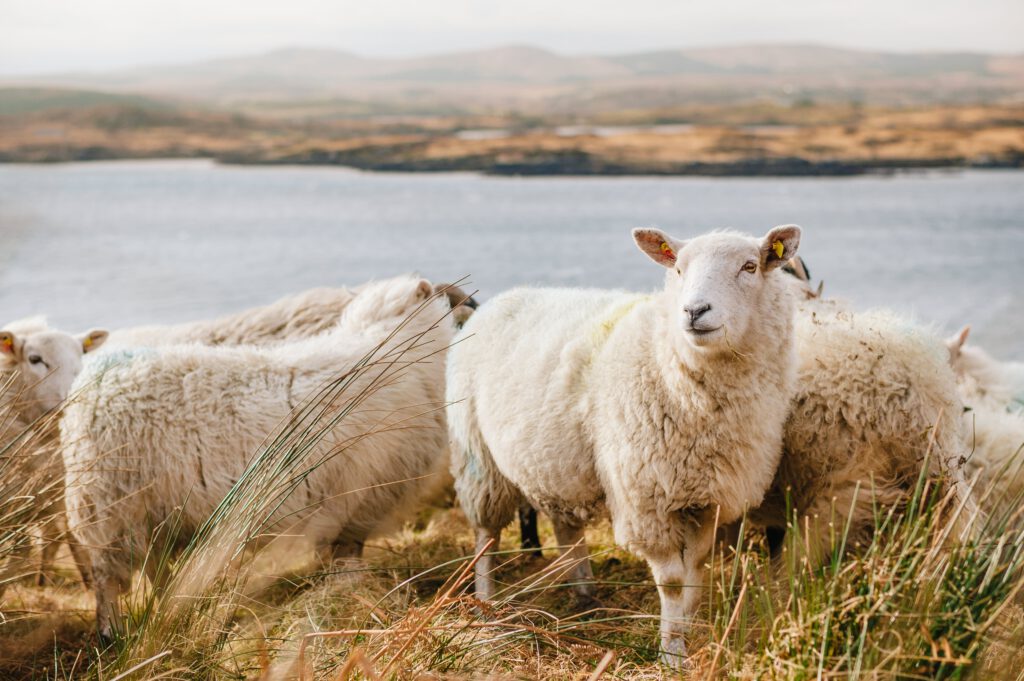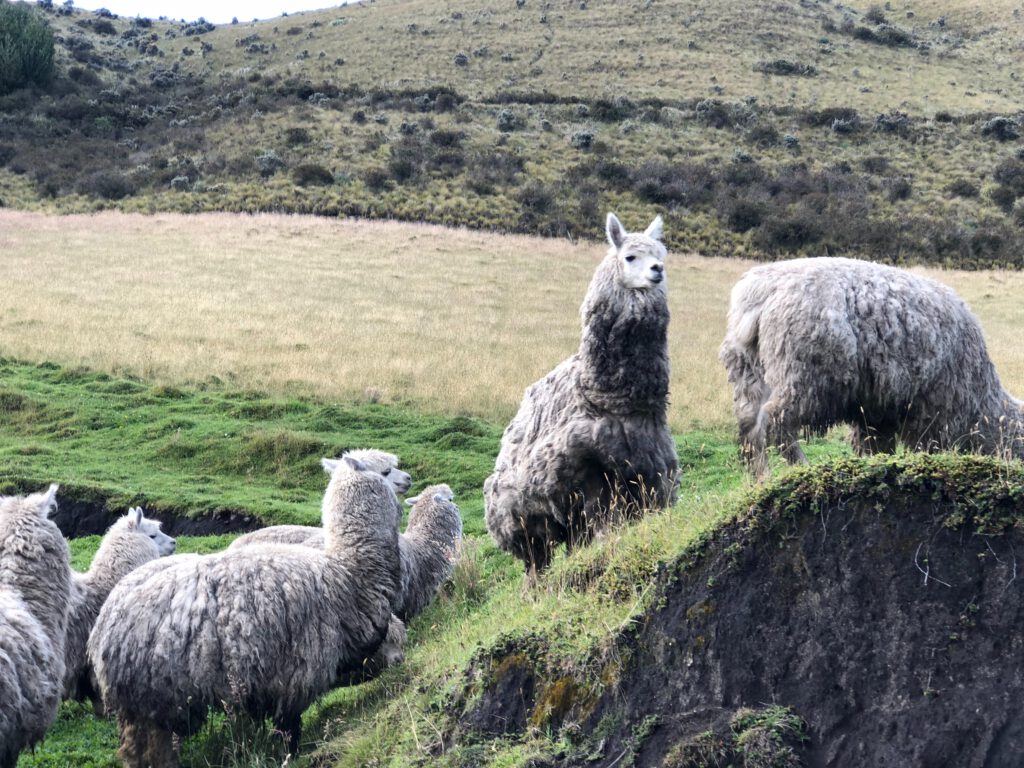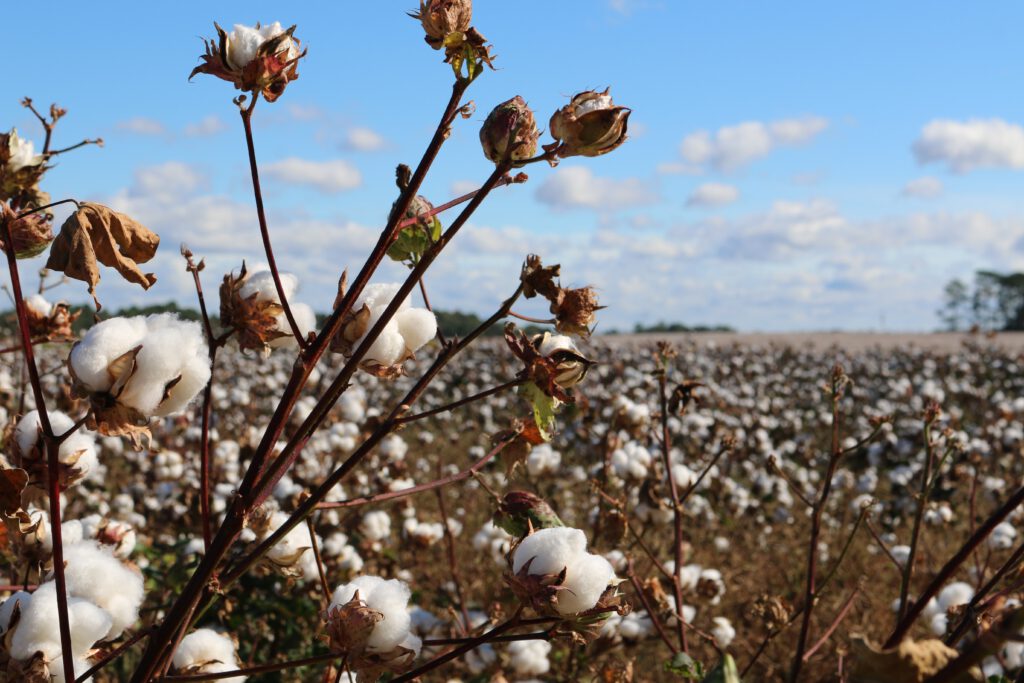Everything about natural carpets
You often ask us about the advantages of a rug made of natural fibers over artificial ones. Apparently each of us knows that natural = healthier and we subconsciously choose what will be better for us. But how do you make informed choices? Let's start by considering the types of natural yarns from which good quality rugs are made.
Silk carpets
The most expensive, but also the most durable and top-quality fiber obtained from silkworm cocoons. You can see this interesting process here
Silk it glistens nobly, "breathes", is light, cool in summer and warm in winter. It has antistatic, non-allergenic properties, and above all - it is extremely pleasant to the touch. Silk fiber is also the thinnest weaving material, therefore natural carpets made of this yarn are characterized by extraordinary detail of the pattern and density - unattainable in the production process of carpets made of other materials. Density is the number of bunches (or hairs) per 1 m2. The higher the density, the more durable the carpet. Wool carpets average 100-500 thousand. knots / m2, while silk carpets up to 1-2 million!
The most valued are silk rugs from the areas of ancient Persia, so famous Ghom, Kashmir and Nain. Chinese and Indian carpets are also becoming more and more popular. They differ mainly in the pattern (each area has its own traditional, characteristic for a given region), the way of weaving (hand or machine woven), composition (100% silk or wool with silk) and finish (classic tassels or threads interwoven with gold or silver) .
Silk carpets are the most expensive. The average cost for 1 / m2 of a pure silk carpet is approx. zlotys.
The offer of companies offering carpets for sale includes such terms as bamboo silk and Sari Silk silk. What do they have to do with natural silk? The first one - only a touch feeling, because bamboo silk is just a different, marketing name viscosewhich you will learn in detail later in the article. Sari Silk is pure recycling. It is a yarn made from scraps of materials left over from the production of Indian saree.
Here you will find silk carpets from the CARPETS & MORE offer
and here is the rugs collection Sari Silk carpets
Wool carpets
Wool is the most popular raw material used in carpet weaving. This is due to its many unique features appreciated by users of woolen floor coverings.
First of all, it is much easier to obtain than the previously described silk, which has a significant impact on the price of woolen carpets. Why is it so often used? Because it is easy to clean, it is characterized by high durability, has antistatic properties, breathable properties and thermo-active (regulation of the humidity level in the room). It is also characterized by color fastness, softness, it is a flame-retardant and very elastic material. The latter feature means that even if you place a heavy piece of furniture on a wool carpet, which will leave a mark on it, these marks will disappear after some time. A wool rug will work in any room also because it is easy to clean.
But: wool is uneven! There are many varieties of it:
1. Sheep's wool Merino is one of the most valued types of wool in the world. It is obtained from sheep of the merino species living in extremely difficult weather mountain areas. This fact determines the uniqueness of merino wool, which has a remarkable ability to regulate heat, remove moisture from the body and maintain its constant temperature.
The structure of the merino hair, which contracts or expands under the influence of temperature, is responsible for this unusual process. When exposed to heat, merino wool decompresses, letting excess heat in, and when it is cold it shrinks, reducing heat loss. Additionally, the Merino wool fiber is extremely thin, delicate and skin-friendly.
Carpets & More offers carpets made of New Zealand wooland thus Merino sheep bred in New Zealand. Here you will find selected collections of this type of wool
If you are looking for an exceptionally pleasant to the touch rug, you should also be interested in the offer of manufactured rugs from virgin wool, and therefore obtained from shearing young lambs.
It has all the features of sheep wool, and its delicacy makes communing with rugs made of it a delight under the feet.
You can find an offer of rugs made of virgin wool here
2. Goat wool: Kashmir and Moher
Made of wool Cashmere some of the noblest fabrics in the world are made. Kashmiri goats graze on the slopes of the Himalayas, at altitudes of 3-5 thousand. meters. So they have to deal with extreme cold and temperatures as low as -30 degrees Celsius. Thanks to this, the wool of these goats acquires its unique properties. Anyone who experiences the pleasure of wearing a cashmere sweater becomes a prisoner of this choice forever. No other wool material is as velvety to the touch as cashmere, and at the same time retains heat perfectly - several times better than the previously described sheep wool. This is because cashmere down is very delicate and up to 6 times thinner than a human hair. This allows you to achieve a very dense stitch during weaving while maintaining a small weight of the product.
It would seem that such a dense stitch is so "armored" that it is difficult to breathe through it. Nothing could be more wrong! Cashmere is extremely breathable and perfectly absorbs water vapor, almost immediately draining it outside. So pure cashmere products will not absorb water and dry very quickly. Cashmere is also very springy. This fact makes cashmere products fit beautifully and do not crease. Cashmere also does not absorb odors and is resistant to dirt. The fleece from Angora goats, i.e. Moher, is also extremely delicate. This wool has the sheen of silk and is resistant to the felting process.
Ask the Carpets & More seller about the LONGBARN mohair smooth carpets - tel +48 22 112 01 39
3. Rabbit wool - Angora
Angora is one of the oldest long-haired breed of domestic rabbits. The wool of these bred animals has a characteristic long, soft and fluffy hair. It is very warm. It is not used in the production of carpets. Most often it is mixed with other wools and is used in the production of winter clothing (scarves, sweaters, gloves, hats).
4. Wool the camel
Extremely high temperatures during the day, drastic fall at night, strong winds, dust and sand - this is a natural, desert habitat to which camels have adapted. This would be unattainable without the unique properties of the bristles covering these animals.
So if you're looking for the most durable wool product, look for one that is made of camel wool! It is by far the most durable of all types of wool. The strength of the camel wool fibers is 70% higher than that of Merino sheep. This is due to the unusual structure of the "double" hair, resistant to external conditions and less stretchy.
Camel wool also has other extremely valuable qualities. The fact that it is coated with lanolin (natural animal fat that builds up on wool) makes it allergy friendly (does not attract dust and allergens) and does not quickly absorb dirt. Camel wool is also characterized by water-repellent properties that repel water molecules. Thanks to this, it "breathes" without trapping air containing water vapor. On the other hand, the previously described unusual bristle structure allows the excess heat to be released to the outside. All this makes camel wool products durable, very warm and friendly to health.
5. Lamas wool - Alpaca
The wool that covers the body of the Alpaca llamas is much longer, softer, thinner and more shiny than the wool of other llamas. That is why it is Alpacas - and especially young ones, from which the so-called "Baby alpaca" (fine fleece) are a common choice of woolen producers. Alpaca comes in 22 natural colors from white, through beige, to various shades of gray to deep black, and is usually processed in this natural version. Like sheep wool, Merino has thermal properties, i.e. it heats when it's cold and cools when the air temperature is high. It is very light and warms better than sheep's wool. Alpaca owes its thermal properties to tiny air pockets located along the entire length of the hair. The aforementioned "pockets" also make the wool light, breathable and retain heat.
The lighter and more delicate the fleece, the less "acrid" the wool is
All wool rugs from C&M offer can be found here: WOOL rugs
Cotton carpets
Every user of cotton clothes knows that cotton is extremely pleasant to the touch, breathable and antistatic. Besides, it easily accepts dyes. That is why cotton rugs can have a unique beautiful and colorful design. It is slightly less durable than wool, and washing a cotton carpet should be done by a proven specialist (too much water and an improperly carried out drying process can destroy it). However, it has so many advantages that it is loved by users.
What features does cotton rug? First of all, it is extremely pleasant to touch! It is light, so you can easily rearrange your home by moving it to different places.
Cotton rugs are flat-woven (as are garment fabrics) and feature a distinctive, low-pile, loopless pile. This makes them resistant to knocks from furniture and is the perfect choice when pets who like to "drag" classic loop rugs with their claws. It is also a good choice for allergy sufferers. Cotton carpets from the Carpets & More offer are OEKO-TEX certified. So you don't have to worry about allergies accompanying people who are sensitive to wool or artificial dyes.
Watch out for cotton rugs that don't boast a well-known brand! Their lightness can make them slide on the floor and the corners will tend to curl up.
In the case of a cotton carpet, it is worth investing in a company with extensive experience in weaving, such as Louis De Pootere. This brand does not need to be advertised! 150 years of tradition and carpets that adorn such great places as Buckingham Palace, the Louvre museum and the Prince's Palace of Monaco.
It was Louis De Poortere who came up with the idea of weaving carpets from cotton chenille (very hard to wipe). So perfect that manufacturers all over the world imitate it. Is the copy comparable to the original? We have no doubts that no! Check it out and see for yourself.
You will find the full offer of this brand: Louis de Portere
Viscose or "rayon" carpets
Experts argue about the classification of viscose. Is it a natural resource or not?
Viscose is a yarn of natural origin. It is obtained from plants. It is produced as a result of chemical treatment of cellulose obtained from trees (mainly conifers). Therefore, despite its natural origin, in our opinion, viscose belongs to the group of artificial fibers.
Despite this, he has many followers. Mainly due to the aesthetic values very similar to silk. Viscose is silky to the touch, shines beautifully, it is very soft (like cotton) and fluffy (like wool). Viscose "breathes" and absorbs moisture. While the latter is valuable when using viscose to make clothes, it is a disadvantage in carpets.
Viscose does not like liquids. After pouring them on the carpet, a trace remains (more or less visible depending on the type of liquid), and the "wooden" origin of this material means that the traces left on the viscose carpet by the piece of furniture will never die.
So if you are thinking about buying a rug made of 100% viscose yarn, think carefully where you want to put it for years and whether it will not be too exposed to dirt. These types of rugs are perfect for bedrooms and less frequented parts of the house.
Here you will find a link for 100% viscose rugs: Viscose rugs
An excellent choice are carpets that are a mixture of wool and viscose. If there is more of the former, the rug will be durable and resistant to creases, like wool, and at the same time nice and noble to the touch, like a viscose rug. An example of such an unusual mixture are hand-woven wool rugs with an admixture of hand-cut by weavers at different heights viscose rugs from the collection Seduction
Viscose viscose uneven
In the offer of many producers and distributors (also with us) you can find many carpets made of this material. They are often smooth, in similar color shades and differ only in price. So how to justify the high purchase cost of some and low cost of others?
As usual, the price is a derivative of quality. The most expensive viscose carpets are made of the highest quality of this material, and its quality depends on a multi-stage production process.
Already the first stage consisting in cellulose extraction requires working with high-quality cellulose pulp, which should be 90% pure. The more contaminated it becomes, the worse the yarn will develop.
The second stage is the so-called conversion of alkaline cellulose consisting in the removal of impurities from cellulose. The next steps are ironing, leading to the receipt of the so-called "White crumb" necessary to obtain "yellow (aged) crumb", which after maturation is deprived of gas bubbles in order to finally turn into "rayon" fibers after an acid bath.
This complicated, multi-stage process takes place in various places - from huge Chinese factories (the largest producer of viscose) focused on mass production, to small, family and traditional Indian manufactories from which yarns for carpets are obtained, which you can find in the Carpets offer & More.
The quality of the viscose, the quality of dyes, the method of production and the density of weaving, of course, translate into the quality of the entire carpet. The higher these parameters, the longer your carpet will be beautiful, the easier it will be to clean and the longer it will keep its original color and will be wonderfully soft.
If you are looking for carpets made of top-quality viscose, check out the collection of hand-woven carpets Northern Light and Cosmos
Both are made of yarn dyed in the same shades. So you can freely mix rugs from these collections even in one interior, maintaining its elegant consistency.
Design and copyright: Magdalena Świerlikowska, CARPETS & MORE

